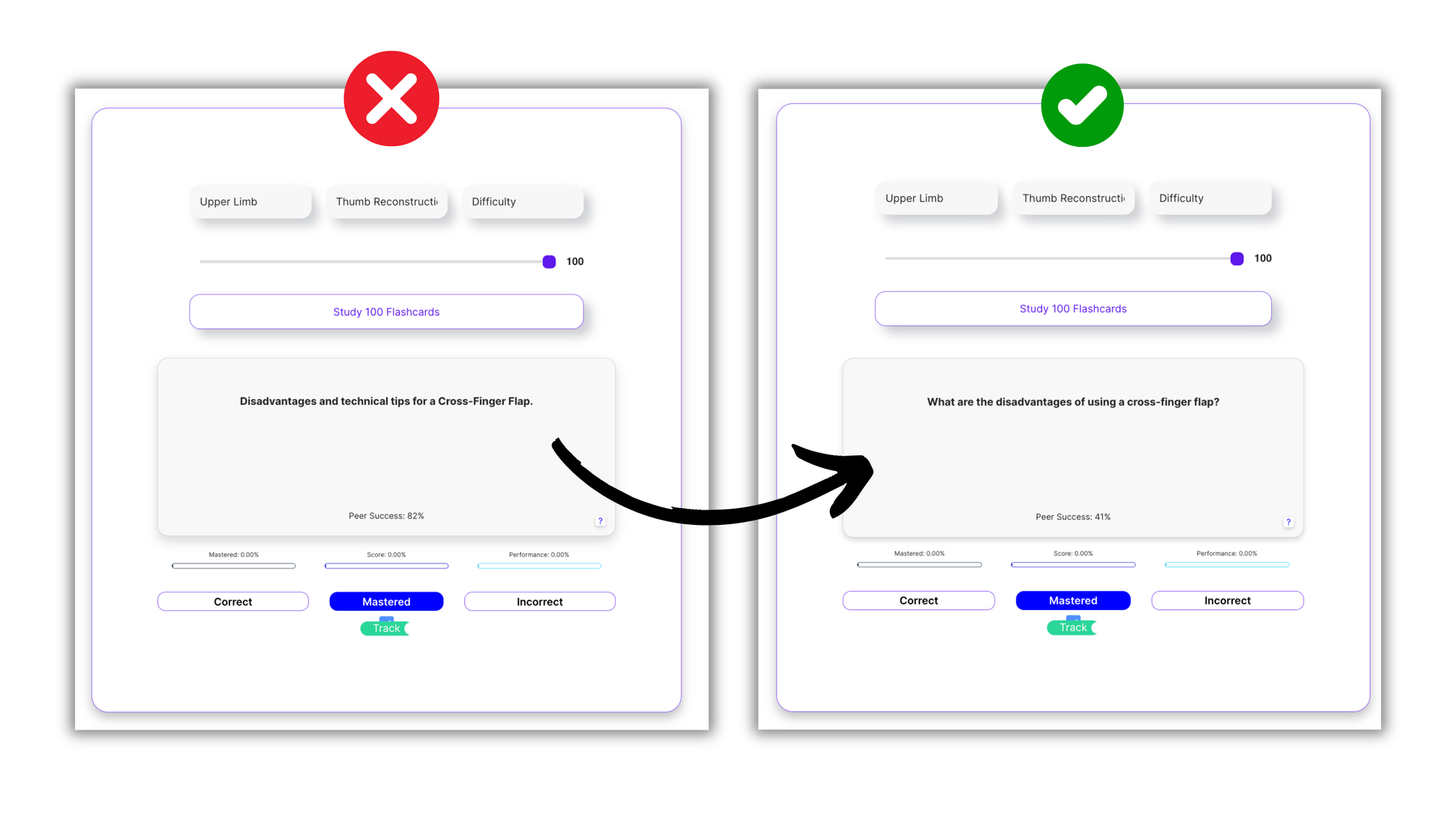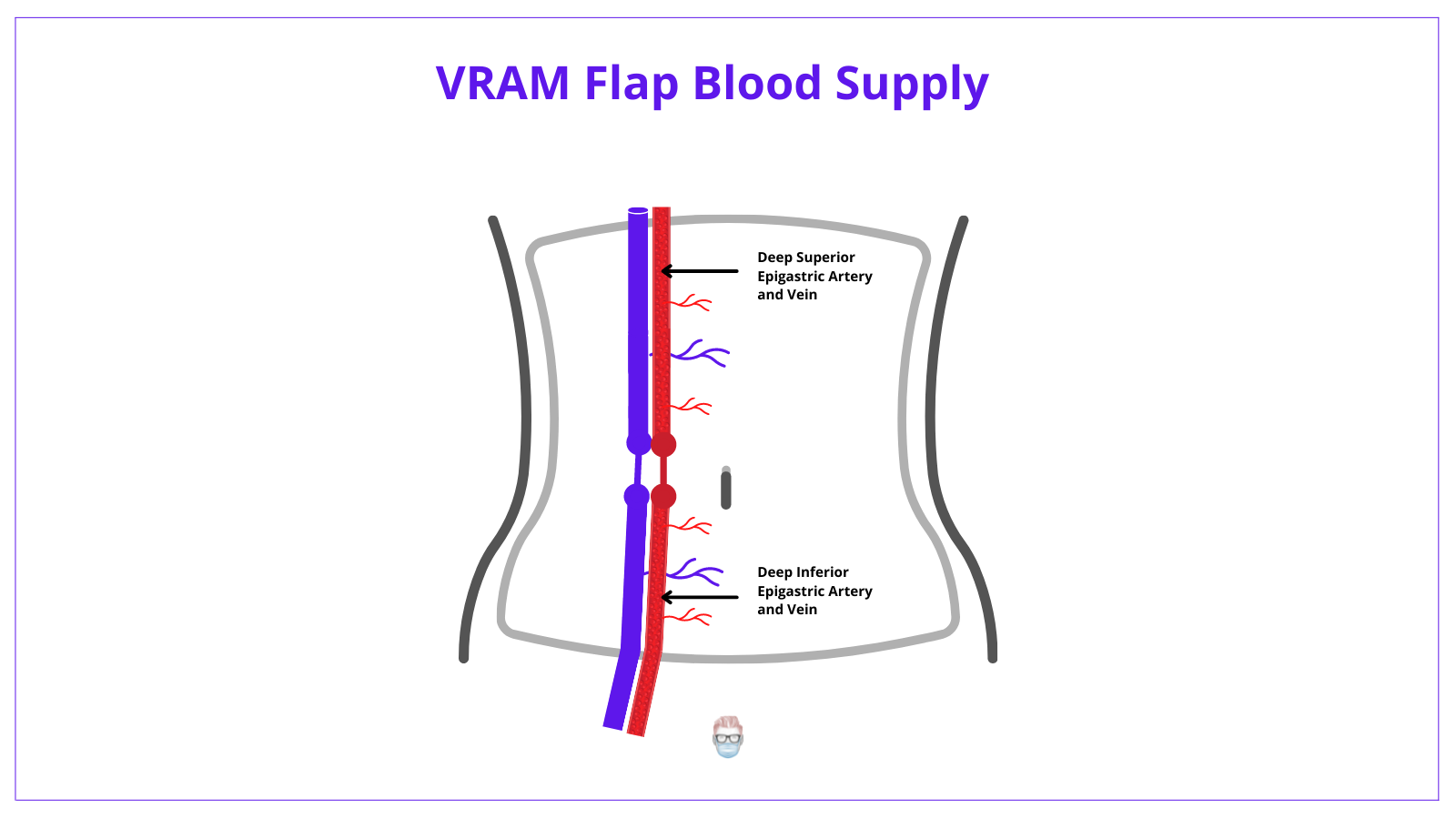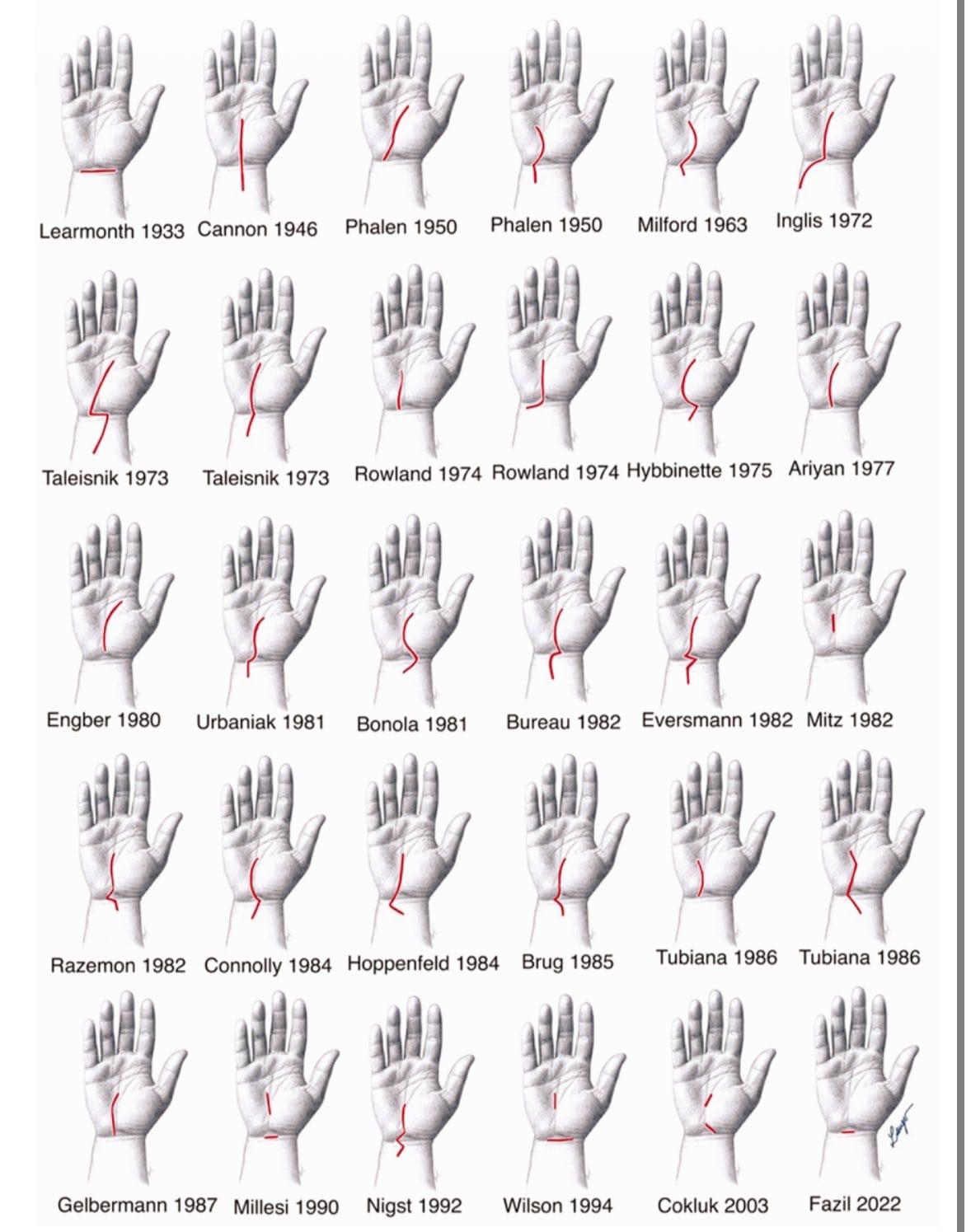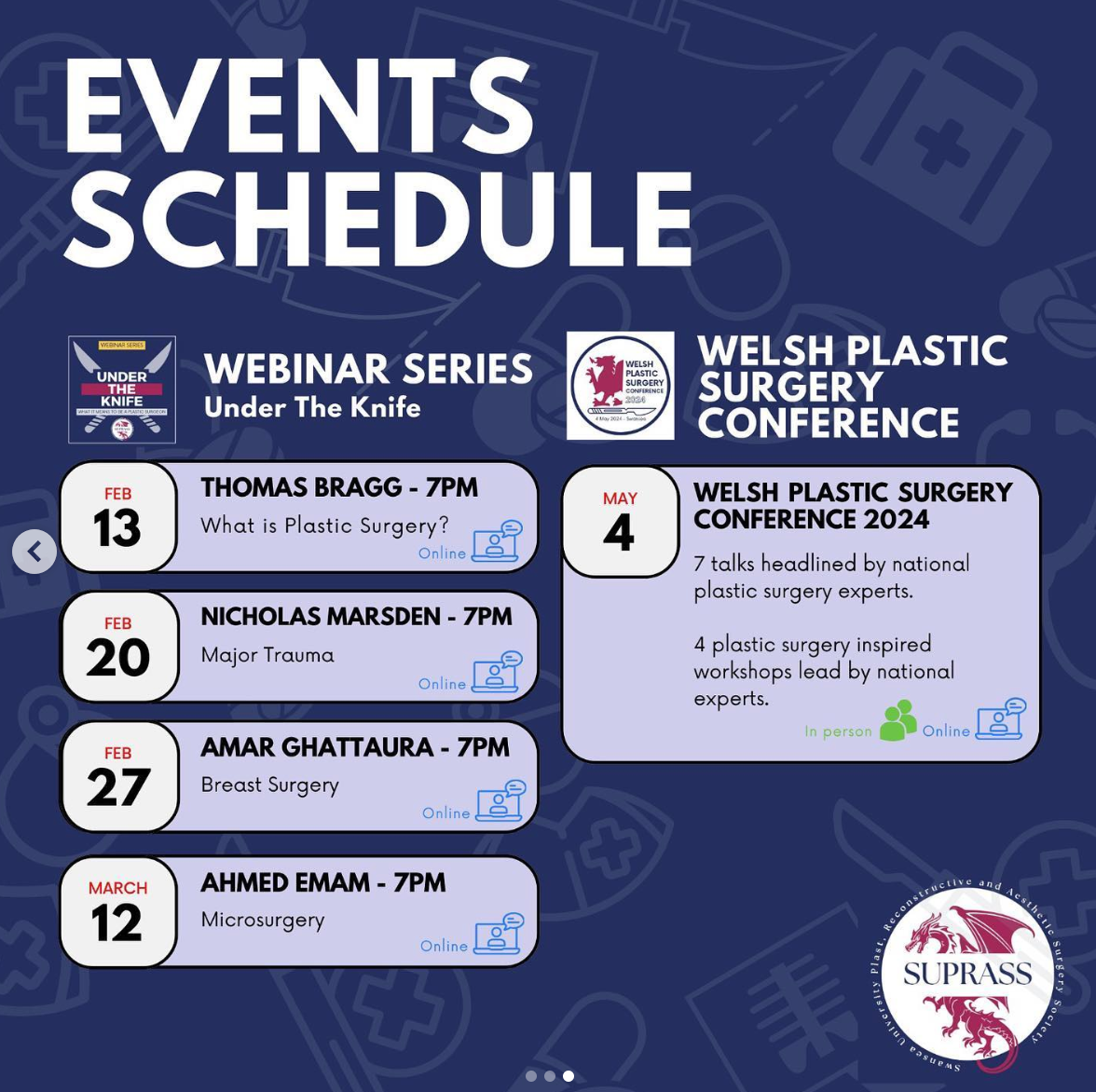In this week's edition
- ✍️ Letter from P'Fella
4 Principles to the perfect flashcard. - 🤓 The Sunday Quiz
VRAM Flap - is it versatile? - 🫵 Picks of the Week
USMLE Cheats, Incisions & AI Interview Prep. - 🚀 New Features
Dropdown menus! Simple, but good. - 🔥 3 Hot Cosmetic Articles
The Perfect Male Bum, Botox, Ozempic.
Now with 1 sentence summaries! (NEW)
PS - Articles on thePlasticsFella.com have been read +1,000,000 times since April 2021. Huge thanks for your support! ❤️
A Letter from P'Fella
Designing the perfect flashcard.
Imagine trying to distill the essence of a complex surgical technique or a nuanced anatomical concept into a flashcard. The goal? To make it whisper the concept into your ear as though it's the simplest truth you've always known.
👇
After piecing together almost 11,000 flashcards over a 3 year period, I took a step back and really thought about what makes a flashcard not just good, but awesome. That thinking time led me to four principles:
- Single Purpose: identify the core concept or the 'big idea' of what needs to be communicated. Trim the fat. "What is the one thing a learner must understand from this flashcard?". Not every detail needs a flashcard. Get picky.
- Layered Learning: complex ideas are broken down into a series of simpler, interconnected flashcards. Each card addresses a foundational element that builds towards understanding the more complex whole.
- One idea, one flashcard: Keep it simple. It's tempting to cram as much information as possible onto a single card, but true effectiveness comes from focusing on a single question followed by one clear answer.
- Word Precision: obsessed with word choice. Every term, every phrase is weighed for clarity and immediacy. The right word can turn a lightbulb on; the wrong one can muddy the waters.
Check out these 4 principles in action with the Thumb Reconstruction flashcards. The original card might've made you juggle two concepts at once — that's a no-go now.

This methodology might mean a greater number of flashcards, but the trade-off is a deeper, more genuine understanding and retention of knowledge. This all came about because of amazing feedback from one of the community.
Lots of love,
P'Fella ❤️
The 4 Principles to a 'perfect' flashcard:
1. Single Purpose: Distill each concept to its essence.
2. Layered Learning: Build progressively with each card.
3. One idea, one card: One concept per card for optimal retention.
4. Precision: Select words for clarity and immediate comprehension.
The Sunday Quiz
The VRAM Flap
The VRAM flap is a composite myocutaneous flap consisting of three layers: skin, subcutaneous fat, and muscle. Its versatility allows it to be dissected and raised as the following:
- Muscle-only
- Segmental muscle flap with preservation of part of the muscle
- Myocutaneous flap with a transverse, oblique, or vertical skin island flap
- Osseomyocutaneous (when including inferior ribs - not common)
The most commonly used myocutaneous composition consists of skin, anterior rectus sheath, rectus muscle, and the perforating vessels which connect them.

Picks of the Week
A weekly round up of some highlights in the plastic surgery community.
Tweet of the Week
A Deep-Dive on USMLE Cheating
I’ve gotten DMs asking “How could the USMLE prove they cheated? High scores alone don’t prove that!”
— Bryan Carmody (@jbcarmody) February 1, 2024
-and-
“How do I know my high score won’t be flagged as evidence of cheating just because of where I took the test?”
Lemme explain how I think these cheaters were caught.
(🧵) https://t.co/W1iGCzF1bY
Image of the Week
The Evolution of Carpal Tunnel Releases.

Question of the Week
Generated by the AI Answer Composer for Interview Prep.
"How do you define an audit?"
An audit, in the context of clinical practice, is a systematic review and evaluation of current practice against defined, evidence-based standards. It's a quality improvement process that seeks to improve patient care and outcomes through systematic review of care against explicit criteria and the implementation of change. It involves a cycle where practice is examined, compared to a standard, changes are implemented if necessary, and then re-audited to ensure improvement. The stages of an audit cycle include selecting a topic, setting standards, collecting data, comparing results with standards, implementing changes and then re-auditing. It's a crucial part of maintaining high standards in healthcare and driving continuous improvement.
Event of the Week
P'Fella showcases one upcoming event you might like

New Features
Heard your feedback loud and clear: "Make finding stuff easier!" Challenge accepted. First fix? Dropdown menus! Small change, big impact. More improvements on the way. Stay tuned.
Articles of the Week
3 Trending Cosmetic Articles!
(with the new 1 sentence summary!)
3 Trending Articles
- Ozempic is trending up 📈 (ASJ, July '23)
The study reveals a substantial increase in Google search interest for Ozempic for cosmetic weight loss, with a relative search volume (RSV) growth rate of 0.957 over five years, highlighting the need for plastic surgeons to stay informed as public demand escalates. - Botox for the Forehead (PRS, Feb '24)
By examining the frontalis muscle's characteristics, the research suggests new injection sites to mitigate common issues like ptosis and 'samurai eyebrows,' aiming for optimal results with minimal BoNT usage. - The Best Male Bum (PRS, Feb '24)
The study identified the ideal male buttocks as having a lateral thigh-to-buttock ratio of 1.18, an oblique projection angle of 60 degrees, and a posterior waist-to-hips ratio of 0.66, based on over 2,000 survey responses


